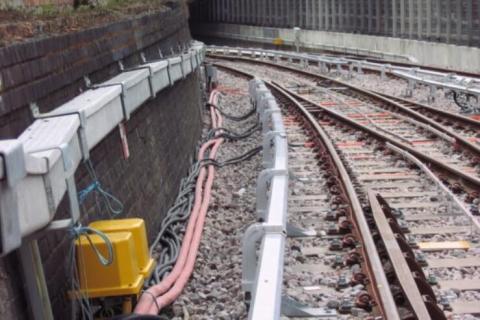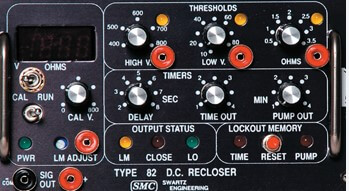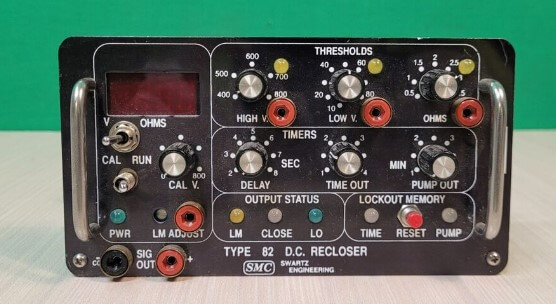
In the intricate world of rail systems, reliability is paramount. From ensuring trains arrive and depart on schedule to maintaining safety for passengers and cargo, every component plays a crucial role. One such component that often goes unnoticed yet significantly contributes to system reliability is the Direct Current (DC) relay. This blog post explores the various ways DC relays enhance reliability in rail systems, discussing their function, benefits, applications, and best practices for implementation.
Understanding DC Relays
What Are DC Relays?
DC relays are electromechanical devices that control a circuit by using a low-power signal to switch a higher power circuit on or off. They consist of an electromagnetic coil and a set of contacts. When current flows through the coil, it generates a magnetic field that pulls the contacts together, completing the circuit. When the current is interrupted, the magnetic field collapses, causing the contacts to open, thus breaking the circuit.
How DC Relays Operate
The operation of DC relays can be summarized in a few key steps:
- Energizing the Coil: When a voltage is applied to the coil, current flows through it, generating a magnetic field.
- Switching the Contacts: The magnetic field pulls the armature, which in turn moves the contacts. This action either completes or interrupts the circuit.
- De-energizing: When the voltage is removed, the magnetic field dissipates, and a spring returns the armature to its original position, opening or closing the contacts as required.
This simple yet effective mechanism allows DC relays to be used in a wide range of applications within rail systems, enhancing their reliability and performance.
The Importance of Reliability in Rail Systems
Reliability in rail systems is critical for several reasons:
- Safety: The safety of passengers and freight is the foremost concern. Any failure in the system can lead to accidents, injuries, and even fatalities.
- Efficiency: Timely operations ensure that trains run on schedule, optimizing the overall efficiency of the rail network.
- Cost-Effectiveness: Reliable systems reduce maintenance costs and downtime, leading to significant savings over time.

GET IN TOUCH
In a hurry? Call us at 276-285-3841
How DC Relays Contribute to Reliability
DC relays enhance reliability in rail systems in several key ways:
-
Quick Response Time: DC relays operate swiftly, enabling rapid switching of circuits. This is crucial in rail systems where split-second decisions can make the difference between safe operation and catastrophic failure.
-
High Durability: DC relays are designed to withstand harsh environmental conditions, including temperature fluctuations, vibrations, and humidity. This durability translates to a longer lifespan, reducing the frequency of replacements and maintenance.
-
Fail-Safe Design: Many DC relays are designed with fail-safe mechanisms. In the event of a power failure or malfunction, these relays will revert to a default position, ensuring that critical circuits remain either open or closed as necessary for safety.
-
Noise Immunity: Rail systems are subject to a significant amount of electrical noise, which can disrupt circuit operations. DC relays are less susceptible to these disturbances, maintaining operational integrity even in challenging environments.
-
Versatile Applications: DC relays can be used in various applications within rail systems, including signaling, train control, and safety systems. Their versatility ensures that they can meet the specific reliability requirements of different components within the system.
Applications of DC Relays in Rail Systems
DC relays find a wide array of applications in rail systems, contributing to their overall reliability:
1. Signaling Systems
Signaling systems are vital for safe train operations. DC relays control signal lights, ensuring that they accurately convey the status of the tracks. This minimizes the risk of collisions and ensures that trains can operate safely even in adverse conditions.
2. Train Control Systems
In train control systems, DC relays manage the operation of various components, including brakes, throttle controls, and traction systems. Quick and reliable switching ensures that trains can respond appropriately to changes in operational conditions.
3. Safety Systems
Safety systems in rail networks rely on DC relays to operate alarms, emergency stop systems, and other safety mechanisms. Their quick response time and fail-safe features make them ideal for applications where safety is paramount.
4. Power Distribution
DC relays also play a critical role in the distribution of power throughout the rail system. They help manage power flow to various components, ensuring that each part of the system receives the necessary energy while preventing overloads.
5. Maintenance and Diagnostics
In addition to their operational roles, DC relays can also aid in maintenance and diagnostic functions. By monitoring the status of circuits, they can help identify potential issues before they escalate into more significant problems, thereby enhancing reliability.
Best Practices for Implementing DC Relays
To maximize the reliability benefits of DC relays in rail systems, it’s essential to follow best practices during their implementation:
1. Selecting the Right Relay
Choosing the right DC relay for the application is crucial. Consider factors such as voltage ratings, current capacity, and environmental conditions when selecting a relay. Consulting with manufacturers or industry experts can ensure that the chosen relay meets the system's specific requirements.
2. Regular Maintenance and Testing
Routine maintenance and testing of DC relays can help identify potential issues before they lead to failures. Implementing a schedule for inspections, cleaning, and functionality tests can significantly enhance reliability.
3. Proper Installation
Ensure that DC relays are installed correctly to prevent mechanical or electrical failures. Follow the manufacturer’s guidelines and industry standards for installation, including proper wiring and mounting techniques.
4. Incorporating Redundancy
In critical applications, incorporating redundancy can further enhance reliability. Using multiple relays in parallel or implementing backup systems can ensure that a single point of failure does not compromise overall system integrity.
5. Training Personnel
Educating personnel about the operation and maintenance of DC relays is vital. Proper training can help staff recognize potential issues early and understand the importance of these components in maintaining system reliability.
Challenges and Solutions
While DC relays offer numerous benefits, some challenges can arise during their implementation in rail systems:
1. Environmental Factors
Rail systems operate in various environmental conditions, which can affect the performance of DC relays. Solutions include selecting relays designed for specific environmental conditions, such as moisture-resistant or temperature-hardened models.
2. Electrical Noise
Electrical noise can disrupt relay operation, leading to false triggers or failures. To mitigate this, using relays with built-in noise filtering capabilities and proper circuit design can help ensure reliable operation.
3. Aging Infrastructure
Many rail systems have aging infrastructure that may not be compatible with modern DC relay technology. Upgrading existing systems or integrating DC relays in a phased approach can help maintain reliability while minimizing disruption.

GET IN TOUCH
In a hurry? Call us at 276-285-3841
Future of DC Relays in Rail Systems
As technology advances, the role of DC relays in rail systems is evolving. The integration of smart technologies, such as Internet of Things (IoT) capabilities, is enhancing the functionality and reliability of DC relays. These advancements allow for real-time monitoring, remote diagnostics, and predictive maintenance, further improving the reliability of rail systems.
1. Smart DC Relays
Smart DC relays equipped with sensors can monitor their own health and performance. They can provide data on operating conditions, which can be used for predictive maintenance, thus preventing failures before they occur.
2. Enhanced Communication
DC relays that communicate with other system components can improve overall system efficiency and reliability. By sharing information about circuit status and operational conditions, they can help streamline operations and reduce the likelihood of failures.
3. Integration with Automation
The rise of automation in rail systems is driving the need for more advanced relay solutions. DC relays that can seamlessly integrate with automated systems will be essential for maintaining high levels of reliability and efficiency in the future.
Conclusion
DC relays are a cornerstone of reliability in rail systems. Their ability to quickly and effectively control circuits, combined with their durability and versatility, makes them an indispensable component in ensuring safe and efficient rail operations. By understanding their functions, applications, and best practices for implementation, rail operators can harness the full potential of DC relays, enhancing the overall reliability of their systems.
As the rail industry continues to evolve, embracing innovations such as smart technologies and automation will be crucial. By integrating advanced DC relay solutions, rail systems can achieve unprecedented levels of reliability, ensuring safety, efficiency, and cost-effectiveness for years to come. Through continuous improvement and adaptation, the future of rail systems looks promising, with DC relays playing a pivotal role in this journey.
Products We Offer
Swartz Engineering strives to provide top-quality products to achieve our customer's needs. Our products include:
- Type 76 DC Relay
- Type 82 DC Relay
- Swartz Engineering’s Type 64 Ground Relay
- Type 32 Reverse Current Relay
- Type 150 DC
- CSM Shield Monitor
- Metal Oxide Surge Arrestors
- Transducers
- MVIS SL Slim-line Contactor
- Fully-tested Power Control Rooms
- Swartz Engineering’s Portable Substations
For nearly half a century, we have proudly led the industry in ensuring safety and efficiency. Swartz Engineering is a trusted family-owned company dedicated to providing top-notch power distribution solutions for the electrical industry. Contact us today!
